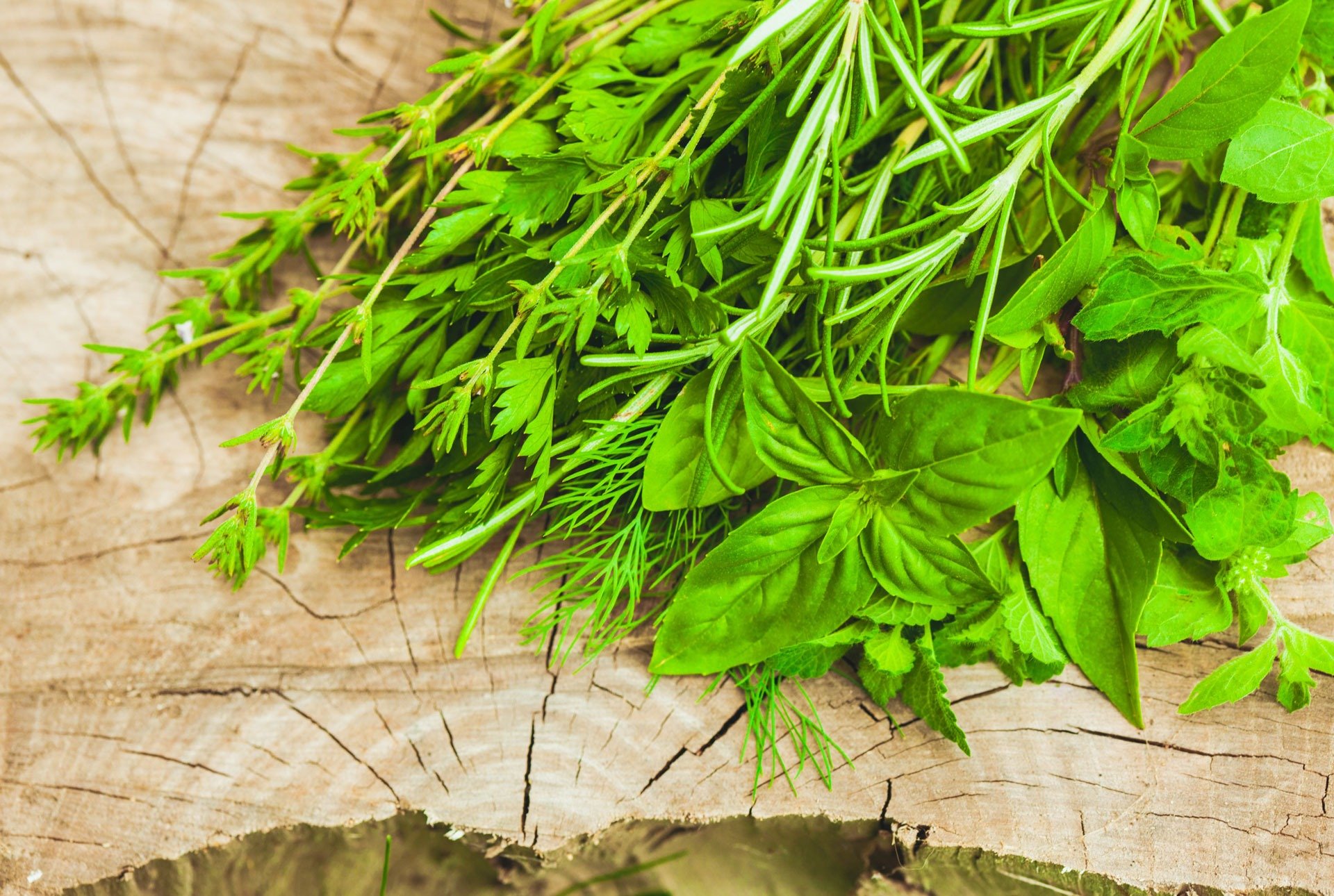Real Food Encyclopedia | Tarragon
Licorice-flavored tarragon is native to Central Asia and Europe, including Siberia and Southern Russia. It began to take hold in French and Italian cuisine in the late medieval period. In modern times, the herb is much more popular in French cuisine (far less so in Italian cooking), where it is an important ingredient in several classical French sauces and dishes. August Escoffier, famous for codifying classical French cuisine in his book, “Guide Culinaire,” mentions the herb no fewer than sixty times in it.
Fun Facts about Tarragon:
- Tarragon’s extensive “serpentine” root system made medieval healers think that it was an effective cure for snakebite. (It’s not, in case you were wondering.)
- Speaking of snakes: tarragon’s scientific name, Artemisia dracunculus, refers to dragons or serpents (dracoin Latin). The English word may come from the Arabic tarkhon or the Greek drakon (“dragon”). The French word for the herb, estragon, sounds way more like “dragon.”
- Estragon (“tarragon”) is one of the main characters in Samuel Beckett’s Waiting for Godot.
- Tarragon is the main flavoring agent in the Central Asian and Russian soft drink tarhun, which is usually colored bright green.
What to Look for When Buying Tarragon
Tarragon is used for its leaves, which are long and slender with pointed tips. Look for stems of tarragon with bright green, perky leaves. Wilted, yellowing or black leaves or stems are a no-go. It is very difficult to differentiate Russian and French tarragon by sight — they look exactly the same. When in doubt (if the tarragon you are buying is not labeled), crush a leaf between your fingers. Russian tarragon smells like sweet grass, with little-to-no liquorice/anise smell. French tarragon will smell distinctly like anise.
Sustainability of Tarragon
Tarragon is not grown on a scale large enough to have much of an environmental impact. However, if you’re concerned about growing practices and pesticide use, check with your local tarragon grower about their growing practices. Better yet — if you can, grow your own. Tarragon does well on a sunny windowsill with regular watering.
Tarragon and Cultivation
There are two types of tarragon — Russian tarragon (Artemisia dracunculoides) and French tarragon (Artemisia dracunculus var. sativa), both in the Asteraceae (daisy) family. Russian tarragon can be cultivated from seed and is less finicky in the garden, but it has a far inferior flavor and can be downright bland compared to the French variety. Its leaves are also quite a bit courser in texture.
French tarragon has a pungent, licorice-like taste due to the presence of estragole, an organic compound that gives fennel, anise and tarragon their distinct flavors. French tarragon is generally cultivated from cuttings or through division. It is usually sterile, meaning it rarely flowers or sets seeds, and can be difficult to grow. (It hates super-hot weather, too-moist soil, super cold weather, you name it — it’s very high maintenance.) Other members of the Artemisia genus include mugwort, sagebrush (not to be confused with culinary sage) and wormwood.
Tarragon Seasonality
Tarragon thrives in the late spring to early summer — by the heat of mid-summer in most places in the US, the herb has usually bolted.
Eating Tarragon
Storing Tarragon
You can usually store tarragon stems right on your counter, in a small vase of water. They will keep for a week or longer this way. You can also roll tarragon stems in a damp paper towel and place in a zip-top bag in your refrigerator’s crisper drawer. The herb will keep for 3-4 days this way.
Cooking with Tarragon
Tarragon can be used fresh or dried, and is usually added to cooked sauces at the last minute. In classical French cuisine, tarragon is an important ingredient in several secondary sauces — mostly famously in Sauce Béarnaise. In French cuisine-speak, secondary sauces are derivatives of any of the five classic “Mother Sauces“: hollandaise, béchamel, sauce tomat, sauce veloute, and sauce Espagnole. It is also one of the herbs in the classic French fines herbes, a seasoning mix of several herbs, including tarragon. The herb has a very distinct flavor that can quickly overwhelm a dish if not used in moderation — especially for those not into its anise/liquorice flavor. It is very commonly paired with fish and shellfish, poultry, eggs and fresh vegetables.
In addition to its use in French cuisine, tarragon is commonly used in Eastern European and Russian cuisine. Here’s a recipe for Hungarian chicken soup with tarragon, and for Slovenian tarragon potica, a kind of sweet bread. In Persian cuisine, tarragon makes up one of the common herbs in sabzi khordan — a fresh herb and vegetable platter that accompanies meals.
Some other delicious uses for tarragon: try making tarragon butter to drizzle on shellfish (especially scallops and lobster). Finely chop tarragon leaves and tuck into your next omelet — perhaps with a little goat cheese? Sub tarragon for basil in a tomato and mozzarella salad. Make tarragon mayo by mixing chopped tarragon with prepared (or homemade) mayo and slather on a BLT. Try making a tarragon vinaigrette with the DIY tarragon vinegar recipe below, plus olive oil, salt and pepper and drizzling over cooked beets, asparagus, green beans, lentils, potatoes or peas.
Preserving Tarragon
Tarragon is great dried — check out this super interesting tutorial on how to flash-dry fresh herbs in the microwave, or just hang a bunch of tarragon upside-down in a dry spot for several weeks until dry, then place in an air-tight container. You can also make tarragon jelly, or check out the DIY tarrago n vinegar recipe, below.
Tarragon Nutrition
You probably will never eat enough tarragon in one sitting to have much of a nutritional impact, but the herb does have decent amounts of calcium, Vitamin B6, potassium, iron and magnesium.


